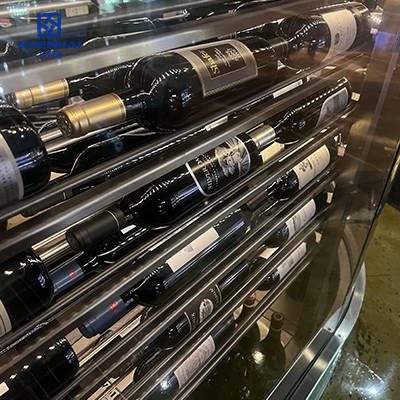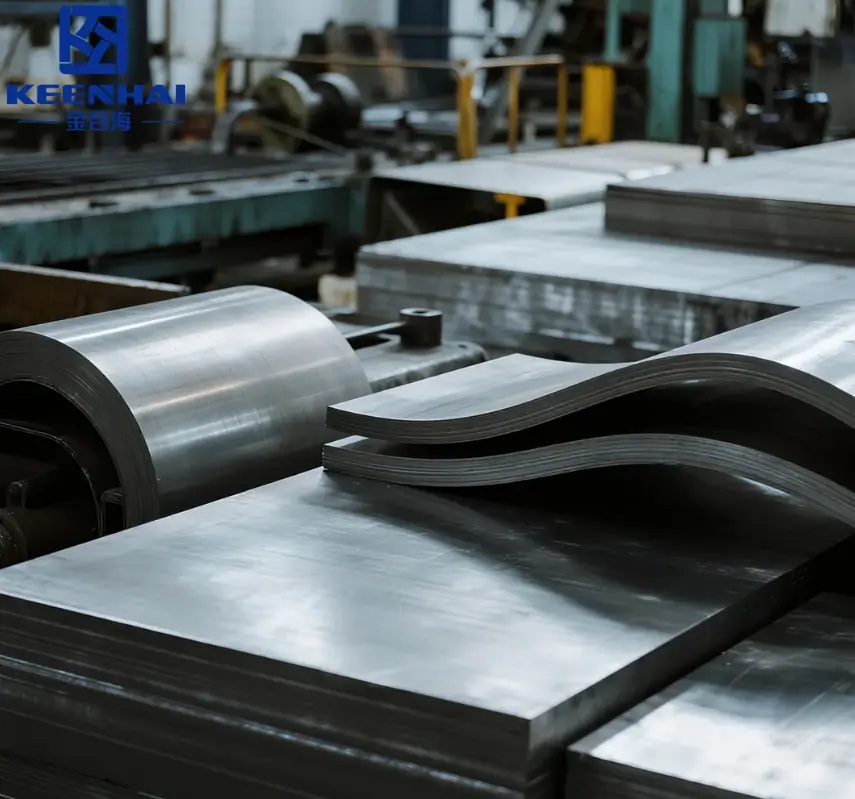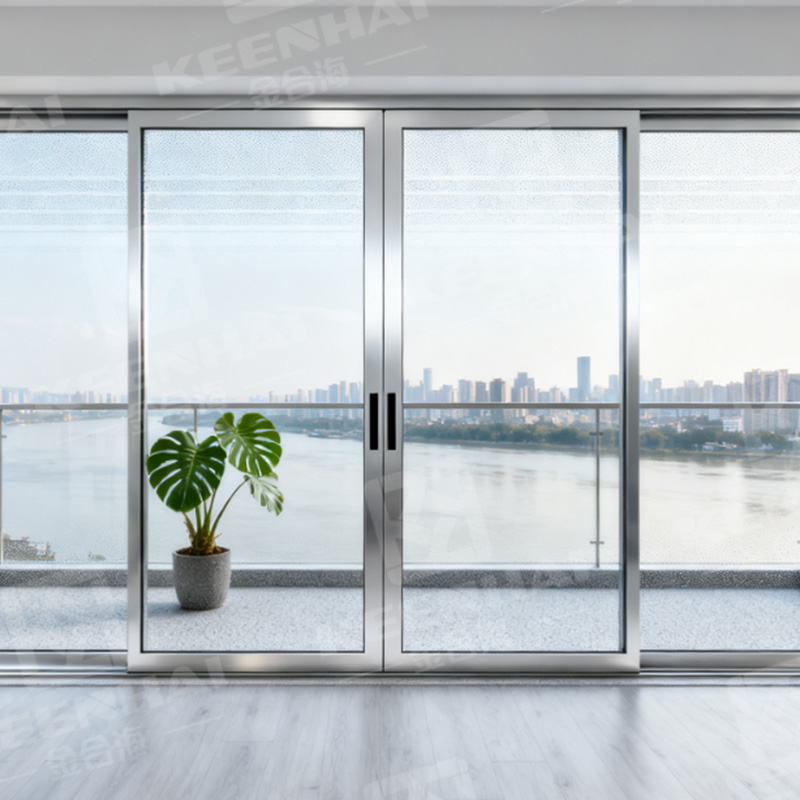Stainless steel wine cabinets outperform wooden ones in durability and maintenance. They resist scratches, dents, and humidity, making them suitable for humid environments or high-traffic areas. While wood provides a warm, traditional aesthetic, steel offers longer lifespan and easy cleaning, ensuring wine collections stay safe and organized for years.
1. Material Durability and Lifespan
When choosing between stainless steel wine cabinets and wooden wine storage, material durability is a top concern. Premium stainless steel wine cabinets offer exceptional resistance to moisture, corrosion, and temperature fluctuations. In real-world scenarios, such as home wine rooms near humid basements or commercial bars with high traffic, steel units maintain their finish and structural integrity far longer than traditional wooden cabinets, which can warp or develop mold over time. Homeowners often select stainless steel for modern kitchens or climate-controlled wine cellars, where durability directly impacts wine preservation.
1.1 Corrosion and Moisture Resistance
Stainless steel naturally withstands water exposure, humidity, and even occasional spills without compromising the cabinet’s structural integrity. In contrast, wooden wine cabinets absorb moisture, leading to swelling, warping, or fungal growth if not sealed properly. For buyers, this makes steel units ideal in coastal regions or indoor environments with variable humidity.
| Material Type | Moisture Resistance | Expected Lifespan | Notes |
|---|---|---|---|
| Keluli Tahan Karat | High | 15–25 years | Resists corrosion, ideal for humid environments |
| Solid Wood | Moderate | 7–15 years | Requires sealing; prone to warping and mold |
| Engineered Wood | Low | 5–10 years | Susceptible to water damage; less durable than solid wood |
For bar owners or wine collectors, selecting cabinets with high-grade 304 or 316 stainless steel ensures long-term protection, even in spaces where temperature and humidity fluctuate daily. Similarly, stainless steel bar cabinets provide the same corrosion resistance for commercial use.
1.2 Scratch, Dent, and Wear Resistance
Daily use exposes cabinets to scratches, dents, and general wear. Stainless steel surfaces are exceptionally tough, resisting dents from glass bottles or minor impacts from trolleys in commercial environments. Wooden cabinets, even with hardwood finishes, are prone to scratches and require regular refinishing to maintain appearance.
-
Inspect cabinet finish: brushed or PVD coatings reduce visible scratches.
-
Consider cabinet edges: rounded corners reduce dent risk.
-
Evaluate usage frequency: high-traffic areas benefit from steel’s resilience.
In practical terms, a stainless steel unit installed in a bustling home kitchen can retain a pristine look for over a decade, while a wooden equivalent may show visible wear after just a few years. Similarly, modular rak wain keluli tahan karat atau wine storage solutions benefit from the same durable surface technology, making them ideal for high-use environments.

2. Temperature and Humidity Control
Maintaining consistent temperature and humidity is critical for wine preservation, and the choice of material directly affects this. Stainless steel wine cabinets provide excellent thermal stability, thanks to their non-porous surface and uniform heat conduction. In home cellars or commercial wine rooms, steel units maintain internal temperatures within ±2°F, even when room temperature fluctuates by 10–15°F. Wooden cabinets, on the other hand, naturally insulate but are prone to expansion and contraction with humidity changes, which can create small gaps or loosen shelves over time.
2.1 Thermal Stability of Stainless Steel vs Wood
| bahan | Thermal Conductivity | Typical Temperature Fluctuation | Impact on Wine |
|---|---|---|---|
| Keluli Tahan Karat | High | ±2°F | Keeps bottles at consistent temperature; minimal impact on aging |
| Solid Wood | Low | ±5–8°F | Insulates well, but expansion/contraction can slightly disturb bottle placement |
| Engineered Wood | Low | ±7–10°F | Less stable; sensitive to humidity and temperature swings |
For collectors storing rare vintages, this difference is critical. A steel cabinet with dual-zone cooling ensures reds and whites remain at their optimal temperatures, while wooden cabinets may require additional insulation or monitoring devices to achieve the same precision.
2.2 Impact on Wine Aging and Preservation
Wine aging is sensitive to both heat and humidity. Humidity levels between 55–70% are ideal to prevent corks from drying, which can oxidize wine. Stainless steel units equipped with humidity control or passive moisture-stable interiors keep wine at this safe range consistently. Wooden cabinets absorb moisture, which can sometimes buffer minor humidity changes but may also encourage mold growth if ventilation is poor.
-
Use a digital hygrometer to monitor humidity inside the cabinet.
-
Adjust internal climate zones based on wine type—reds prefer slightly warmer conditions than whites.
-
Ensure minimal vibration; stainless steel units often incorporate anti-vibration technology for long-term wine stability.
Even in high-use scenarios like restaurant bars or home tasting rooms, steel units maintain a stable environment, protecting the flavor profile and aroma of expensive vintages. Wooden wine storage can still work for moderate use, but it demands careful environmental monitoring and periodic inspection.

3. Design Flexibility and Aesthetics
When it comes to visual appeal and integration with interior design, premium stainless steel wine cabinets excel in modern spaces thanks to their sleek metallic finish and minimalistic lines. They pair effortlessly with contemporary kitchens, open-concept living rooms, or commercial tasting bars. In contrast, wooden wine cabinets offer a warm, classic look that suits traditional interiors, but they often require more maintenance to keep their finish pristine over time.
3.1 Modern vs Traditional Styling Options
| bahan | Styling | Common Use Cases | Maintenance Notes |
|---|---|---|---|
| Keluli Tahan Karat | Modern, sleek, reflective | Contemporary kitchens, home wine rooms, commercial bars | Easy to clean; resistant to scratches |
| Solid Wood | Traditional, rustic, warm tones | Classic home wine rooms, cellar-style bars | Requires polishing; sensitive to humidity |
| Engineered Wood | Transitional styles | Budget-friendly residential setups | Needs sealing; less durable over time |
Modern steel units often incorporate glass doors, LED lighting, and integrated cooling controls, enhancing both functionality and aesthetic appeal. Wooden units can be customized with carved panels or stain finishes but usually lack built-in tech features.
3.2 Customization Possibilities
Stainless steel allows for modular designs that can be tailored to fit unusual spaces or specialized storage needs. Buyers can choose dual-zone cooling, adjustable racks, or integrated display shelving without compromising the cabinet’s structural integrity. Similarly, rak wain keluli tahan karat dan wine storage solutions can be configured to accommodate bottle sizes from standard 750ml to large-format magnums, making them ideal for both collectors and commercial establishments.
-
Measure available space carefully to ensure a snug fit without restricting airflow.
-
Select interior layout options—like individual slots, tiered racks, or pull-out trays—based on your wine collection.
-
Consider surface finish and lighting to enhance display aesthetics while preserving functionality.
By blending modern design with practical customization, stainless steel units give homeowners and businesses the flexibility to create visually striking and highly functional wine storage solutions that stand the test of time.
4. Cost Comparison
When comparing stainless steel wine cabinets to wooden ones, cost is a major factor for both homeowners and commercial buyers. Stainless steel units generally have a higher upfront price due to material quality and precision manufacturing, but they often offset these costs through durability and low maintenance. Wooden cabinets may appear budget-friendly initially but can require ongoing repairs, refinishing, or replacement in just a few years. For example, a well-built steel cabinet for a home wine room can range from $1,800 to $4,500 depending on size, cooling zones, and design features, whereas a solid wood cabinet of similar capacity typically costs between $1,200 and $2,800.
4.1 Initial Purchase Price Range
| Cabinet Type | Price Range (USD) | Features Included | Notes |
|---|---|---|---|
| Keluli Tahan Karat | $1,800–$4,500 | Dual-zone cooling, LED lighting, adjustable racks | Long-term durability; ideal for humid or commercial environments |
| Solid Wood | $1,200–$2,800 | Single-zone cooling, fixed shelves | May require refinishing; susceptible to humidity and scratches |
| Engineered Wood | $800–$1,500 | Basic shelving | Budget-friendly, less durable; limited lifespan |
Steel units provide a strong return on investment in spaces where stability, temperature control, and long-term appearance matter most. For specialized configurations, stainless steel wine storage can be customized without significantly increasing maintenance costs.
4.2 Long-Term Maintenance Expenses
Stainless steel cabinets demand minimal upkeep—wiping down surfaces periodically and checking cooling systems—while wooden units require polishing, humidity monitoring, and occasional repair for scratches or warping. Over a 10-year period, maintenance costs for wood can accumulate up to $500–$800, whereas steel often stays below $150, making it a cost-effective choice for both home collectors and commercial establishments.
-
Inspect cooling and humidity controls annually to prevent system failures.
-
Clean surfaces with non-abrasive solutions to maintain finish quality.
-
For wooden cabinets, apply sealants or polish every 12–18 months to prevent wear.
By evaluating both initial purchase price and long-term expenses, buyers can make a more informed decision between durable stainless steel cabinets and traditional wooden options.

5. Installation and Space Considerations
When planning for stainless steel wine cabinets, careful attention to installation and spatial layout is crucial. Steel units are heavier than wooden ones, so ensuring floor support and proper ventilation is essential. Built-in cabinets integrate seamlessly into kitchens or wine rooms, creating a sleek, flush appearance, whereas freestanding options offer flexibility but require more clearance for airflow and door operation. In commercial settings, space planning also affects traffic flow and accessibility for staff and customers.
5.1 Built-in vs Freestanding Options
Built-in cabinets provide a professional, custom look and can maximize limited space in modern kitchens or home bars. Freestanding units are easier to relocate and ideal for renters or temporary installations. Choosing between these options depends on your interior layout, accessibility needs, and whether you prefer a permanent or flexible setup.
-
Measure the installation area, accounting for ventilation space and door swing.
-
For built-in models, ensure electrical outlets and cooling vents align with the unit’s design.
-
Freestanding units should be positioned on level flooring to prevent vibration and maintain wine stability.
5.2 Weight, Size, and Placement Constraints
Steel cabinets can weigh between 150–400 lbs depending on size and features. Large dual-zone units with glass doors and integrated racks require sturdy floors, while compact models offer easier placement in smaller rooms. Wooden cabinets are lighter but still need enough clearance for air circulation. Stainless steel bar cabinets dan wine storage solutions follow similar space guidelines but allow modular configurations for tight areas.
-
Verify floor load capacity for heavy units.
-
Avoid placing cabinets near heat sources or direct sunlight.
-
Maintain at least 2–3 inches of clearance around all sides to optimize airflow and cooling efficiency.
Proper planning ensures your wine collection stays in optimal condition, while also preserving the aesthetic appeal of your room. Well-installed steel wine cabinets offer both functional efficiency and a premium visual presence.
When choosing between stainless steel wine cabinets and wooden ones, your decision should balance durability, maintenance, aesthetics, and cost. Stainless steel cabinets excel in long-term performance, corrosion resistance, and modern design adaptability, making them ideal for both home collectors and commercial spaces. Wooden cabinets offer classic charm but demand more upkeep and are sensitive to humidity. For premium options and customized solutions, explore the full range of pvdstainlesssteel.com to find units that perfectly match your storage needs and style preferences.







